Harvesting Time & Creating Ingredients For The Cake
Another day, another harvesting day with very good results. This is the time of the year when we harvest currants and as these fruits can't be stored, unless frozen, we have to process it right away. Frozen fruits may be good for some, but I never do that, unless it's for short period, till I can process it.
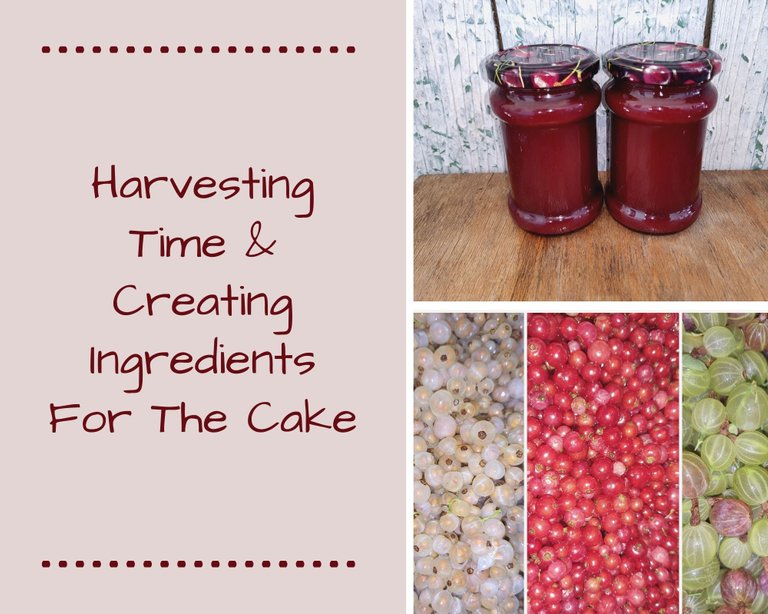
As we have plenty of jams left from previous years, I had to make a decision and the options were very limited. Juice or jam 😁 Yeah, jam again. Well, we made some juice last week, but the majority of the fruits were still unharvested, so yesterday I decided to make more jam, but not the usual one.
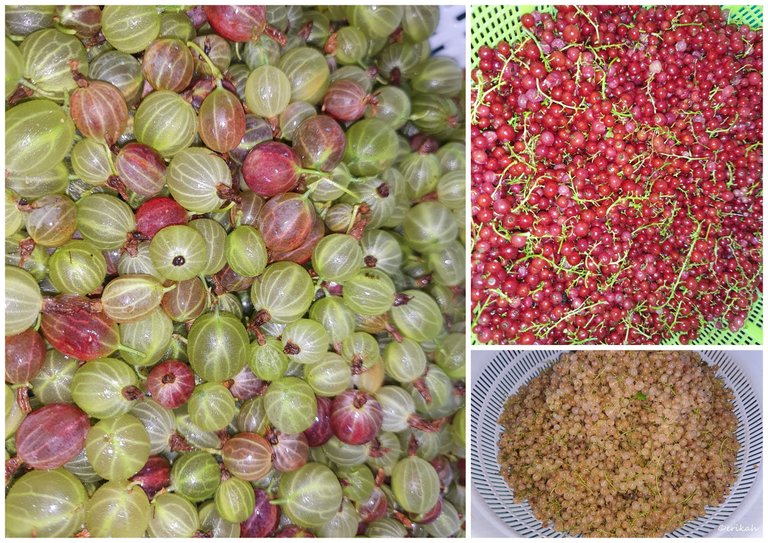
The reason I opted for jam again is simple. This year we had a good currant crop, but a good gooseberry crop as well. Making juice is ice but because the gooseberries were plenty, I thought it's shame to waste it.
It is common knowledge, that the peel of gooseberry contains a lot of pectin, which it the "glue" in the jam, the agent that is responsible for making the jam thick. It is also used to glue labels on bread as it's organic glue. The other reason I decided to go for jam again was that I need a sour and thick jam for my honey cake.
We have a tradition in the family for years. My mom had this honey cake recipe and we had this cake for almost every occasion, family meeting. Not because my mom wanted it but because everyone liked it. Basically it's a honey cake with a sour jam and a semolina cream and the magic is to mix the sweet cream with the sour jam. Unfortunately my mom is not with us anymore, but the tradition is still alive and I am the one making this cake for every occasion and for that I need a special jam, that is more sour than usual. Because I ran out of it, I said this is the occasion to stock up.
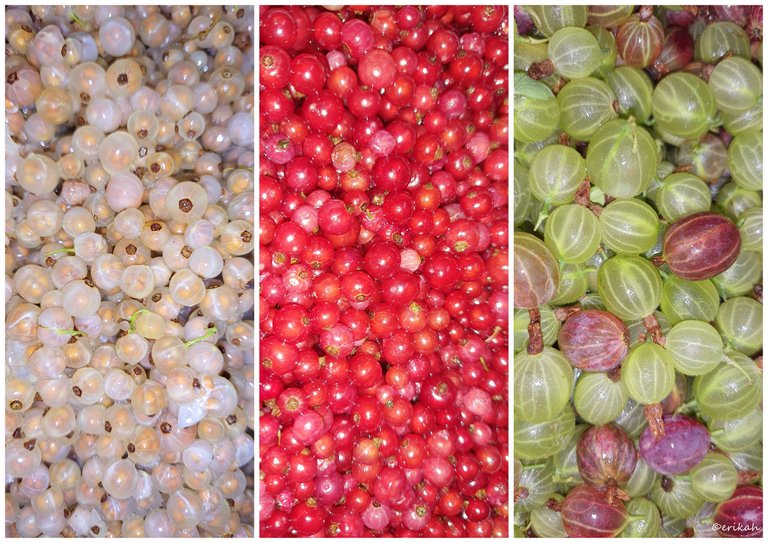
After washing and cleaning the fruits, this is what I started with.
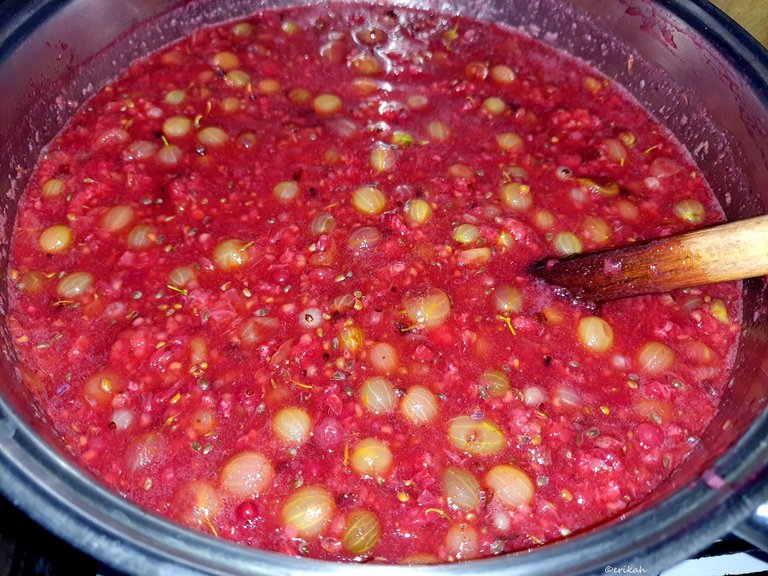
The main idea is to cook till the pectin comes out of it. This took about an hour and a half.

The next move was to separate the peel and the seeds from the juice. This is never an easy task, but we have a quite smart juicer, specially developed for this and as you can see, the juice was quite thick, which was the main purpose.
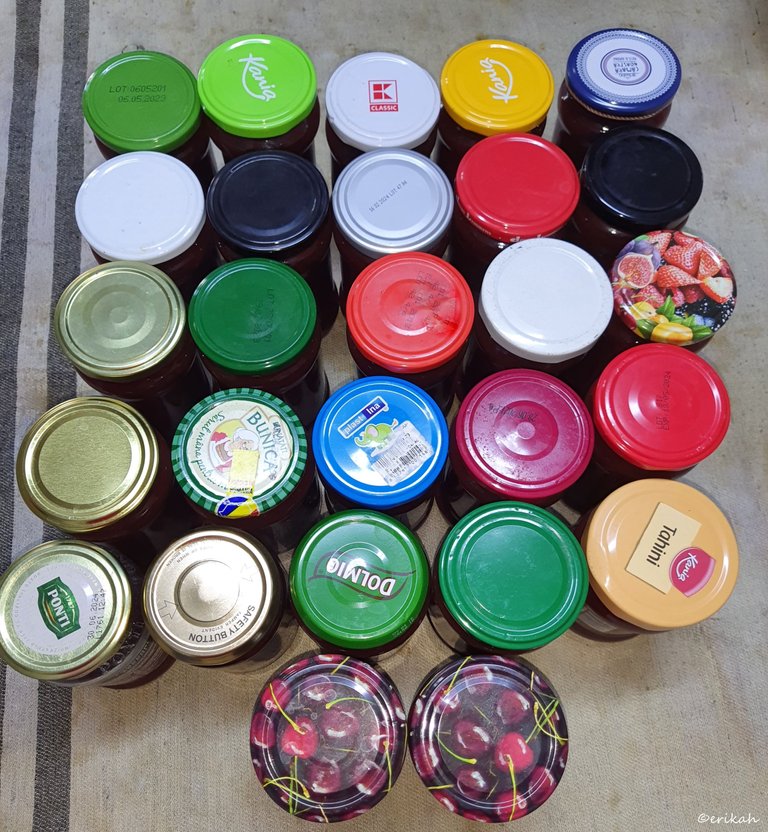
Getting the juice was the easy part as what came after that took at least 5 hours. Cooking is always time consuming and in order to get a thick jam, you have to get the water out of it. I'm also using pectin (powder) to get the necessary thickness.
So when I got to the stage where I said it's thick enough, I added sugar, which is always minimal because I don't like this to be sweet and prefer a healthy product. After that, I filled up the jars. I got 27 jars in total, which is not bad at all and will last for a good few years.
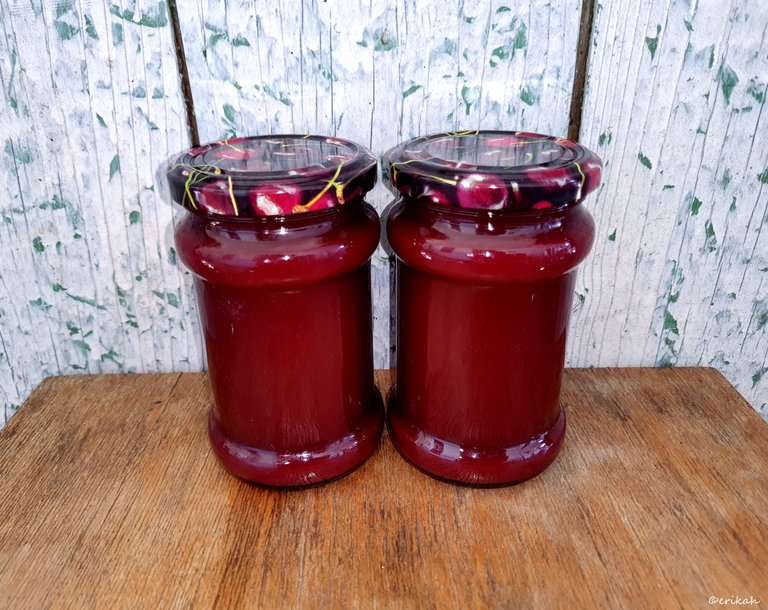
Now you may ask why I am doing this as you can buy whatever jam you like from the supermarket, which is true. However, I have my own organic fruits for free and if you look at the label of any jam you find in the store, you'll see less than half of it is fruits, the rest is sugar and all kinds of chemicals. So why poison myself and my family, when I can have a healthy ingredient for the cake, right?

Your content has been voted as a part of Encouragement program. Keep up the good work!
Use Ecency daily to boost your growth on platform!
Support Ecency
Vote for new Proposal
Delegate HP and earn more
Yum! You have been curated @sirenahippie on behalf of FoodiesUnite.net on #Hive. Thanks for using the #foodie tag. We are a tribe for the Foodie community with a unique approach to content and community and we are here on #Hive.
Join the foodie fun! We've given you a FOODIE boost. Come check it out at @foodiesunite for the latest community updates. Spread your gastronomic delights on and claim your tokens.
Join and Post through the Community and you can earn a FOODIE reward.
Thank you, I really appreciate it.
Hi @erikah! I love this post, because you are taking advantage of the fruits that Mother Earth gives you, and additionally you are doing it in a conscious way with your health. These currants are very interesting, in my country, because it is in a tropical zone, these fruits do not grow, however there are other similar varieties that I also use. It is nice to know that you keep alive the tradition of your mother with her honey cake. Greetings.
Hello Serena and thank you for the nice comment. You're right, every area has its own variety of fruits and vegetables, I bet you have some fruits I've never heard of 🙂
I agree with you, eating healthy is half health they say, so I'm trying to do my part as much as I can, till I can.
Well, excellent, I think it's great that you always privilege health. Look at the cherries growing in my home garden:
These are yellow currants or star currants (Phyllanthus acidus).
And these are semerucos or red cherries (Malpighia emarginata).
Cherries are looking great but those currants, I've never seen anything like those. But would love to taste them. Thanks for uploading these photos, I really appreciate it 😊
Thank you 😊
Fun fact: what do you call gooseberry in your language? We call it "angrešt" :) And yes, I love "angrešt" jam :D
Egres 😂😂😂 But in Romanian it's called "agrișă" 🤣
This is a lot of fun!
Niceee :) The Slovakian term is actually "egreš". Very close again :) Looks like all Slavic languages have similar words for fruits :) It´s becoming some serious linguistic research what we are doing here haha :D
This is indeed interesting and as you say, a serious linguistic research, however, I have to disappoint you 😁
Hungarian is not a Slavic language. It's Finno-Ugric 😏
Yeah, I actually know it :) It has been stuck in my memory somehow since as early as the elementary school where we were taught that Hungarian is "ugrofinský jazyk" :) So I better conclude this linguistic research by stating that "most Slavic languages and the Hungarian language seem to use similar terms for fruits" :)